
About Andrew Cusack
 Writer, web designer, etc.; born in New York; educated in Argentina, Scotland, and South Africa; now based in London.
Writer, web designer, etc.; born in New York; educated in Argentina, Scotland, and South Africa; now based in London. read more
News
Blogs
Reviews & Periodicals
Arts & Design
World
France
Mitteleuropa
Knickerbockers
Argentina
The Levant
Africa
Cape of Good Hope
Netherlands
Scandinavia
Québec
India
Muscovy
Germany
Academica
A Journey to Mells
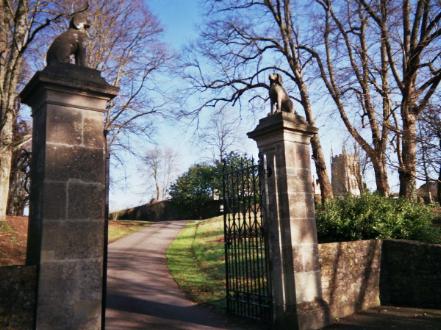
A good number of we happy St Andreans were down in the West Country recently — Somerset to be precise — for the wedding of two of our dear and closest friends [to be covered in a later post]. Being in Somerset, Alec, “Ishmael”, Clare and my good self decided to hop over to the little village of Mells last Friday to see the grave of Msgr. Ronald Knox and to sup at what is known as one of the best pubs in all of England.
Arriving on the bus from Stratton-on-the-Fosse the first thing we noticed were the gates to the Manor House of Mells; a portal designed by none other than Sir Edwin Lutyens himself. The Manor House lies beyond, wherein for centuries lived the Horner family from which the nursery rhyme ‘Little Jack Horner’ originates. The men of the Horner family were practically wiped out in the Great War, so the inhabiting family are now the Asquiths, an interesting family. It was the socialite Margot Asquith (wife to Prime Minister Asquith) who, when introduced to the American film actress Jean Harlow, wittily corrected Harlow’s pronunciation of Margot, saying “No, no. The ‘t’ is silent, like in ‘Harlow'”.
The Asquiths are Catholics but converts, not recusants, and formally ennobled only recently in 1925; Ronald Knox lived with them while completing his translation of the Bible. More recently, Clare Asquith published her book Shadowplay: the Hidden Beliefs and Coded Politics of William Shakespeare, a copy of which has been donated to the library in Canmore by Sofie von Hauch.
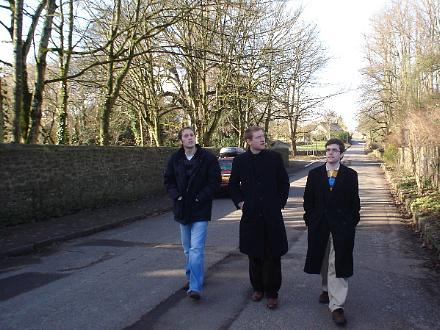
Having taken in the manorial gates in all their Lutyensic glory, we proceeded down the road towards the centre of the village, absorbing the beauty of the landscape before us and that wonderful smell of the countryside.
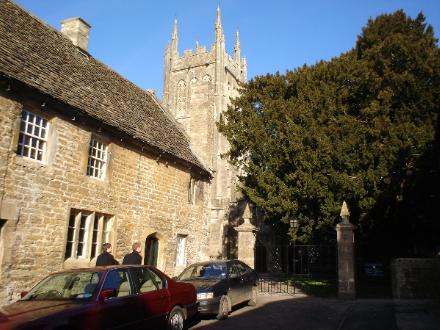
Mells is but a small, though quite pretty, village and we quickly came upon the Church of St Andrew and its adjacent churchyard at the end of a short street off the main road.
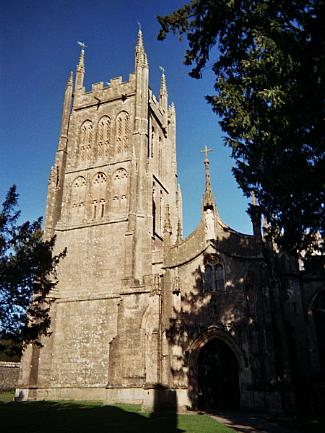
Before us lay a pretty country church in a 15th-century perpindicular style more typical of the south of England, and dedicated, by some happy chance, to the patron saint of our university.
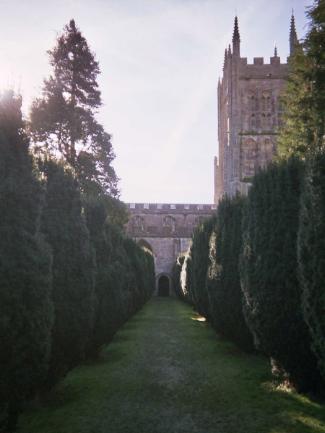
The north side of the church features a line of clipped yew trees which lead from the church to the end of the churchyard and the open fields beyond.
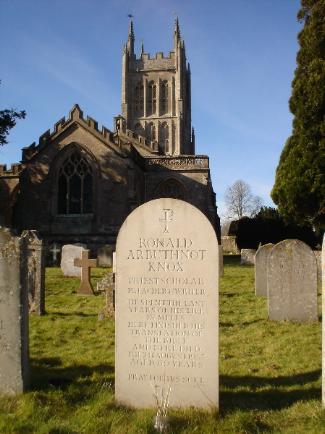
Having nearly circumnavigated the church, we came upon the grave of Ronald Knox. Knox was one of the most famous churchmen of his day. A convert himself, being born an Anglican, he delivered the sermon at the Westminster Cathedral requiem for another great English convert, the brilliant G.K. Chesterton.
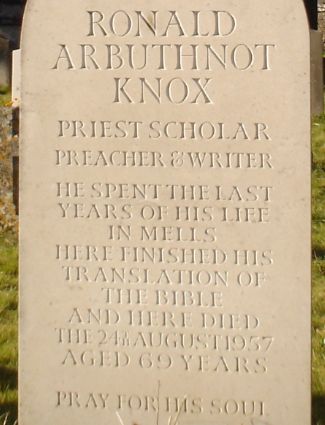
Knox was an Eton and Balliol man who became an author, an academic as well as Catholic Chaplain to the University of Oxford. While visting the Oxfords in Zanzibar (and the Actons in Rhodesia) in 1953, he began his translation of The Imitation of Christ followed by a translation of Thérèse of Lisieux’s Autobiography of a Soul.
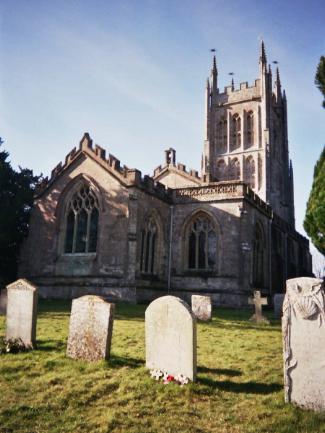
Alec discovered from a pamphlet that the grave of Siegfried Sassoon, the war poet and author of Memoirs of a Fox-Hunting Man, also lay in the churchyard. Sassoon was born into the wealthy Jewish family of that name, though his father was disinherited for marrying a (Protestant) Christian.
Towards the end of his life he was drawn to the Faith and was received into the Church at Downside Abbey, where we were staying during our southern adventure. He asked to be buried at Mells to be near Msgr. Knox, whom he admired. His grave is seen above, with the little Remembrance crosses in front.
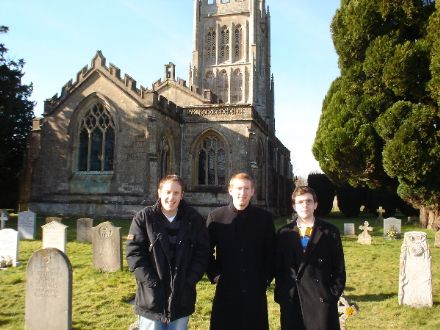
The Three Stooges: “Ishmael”, Alex, and yours truly (with glasses, as I had an eye infection).
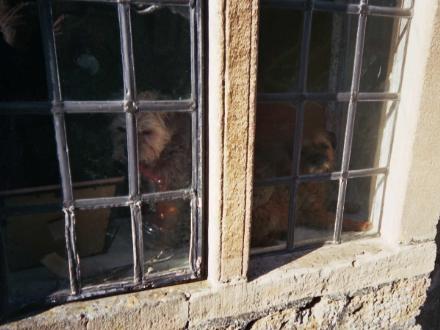
Coming down the lane from the church we came across this pair of wee dogs sitting in a window; in fact, the one sitting upon the other, much to the latter’s chagrin.
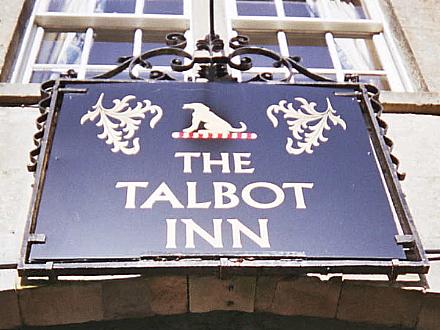
Then, to the Talbot Inn, acclaimed as having some of the best food in any English pub, for there were empty stomachs which eagerly awaited the prospect of lunch.
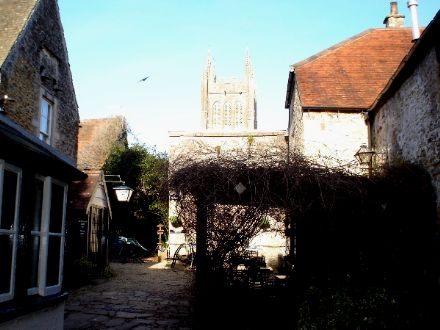
The little court of the Talbot Inn.
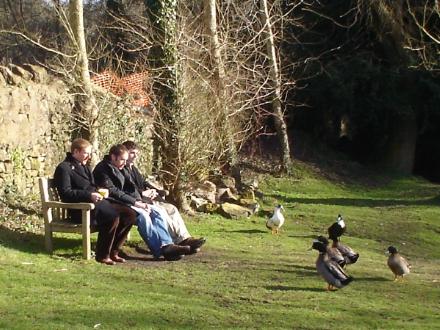
Having amply supped, we headed down to the brook, where we sat like old men and conversed with the indigenous population of ducks. But where’s Clare?
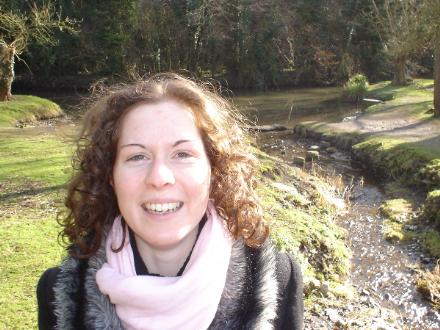
Bless her little face, there she is.
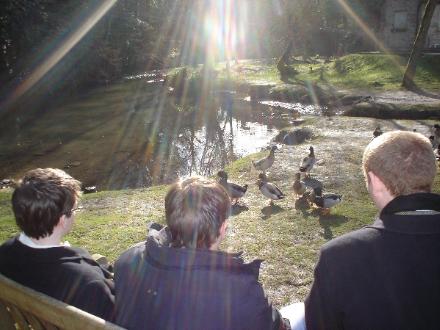
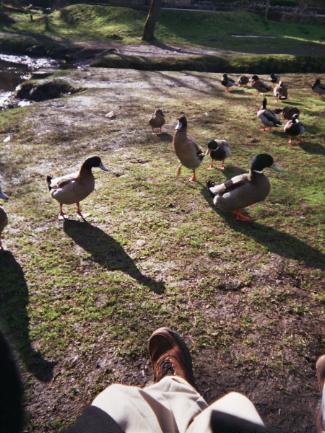
Encore, les canards. After bidding adieu to our acquatic aviary acquaintances the four of us slowly sauntered down a few country lanes deliberating myriad vagaries before heading back to the Abbey. Beautiful scenery, a hearty lunch, a slow saunter; we greatly enjoyed the little village of Mells. In all things, it was lovely.
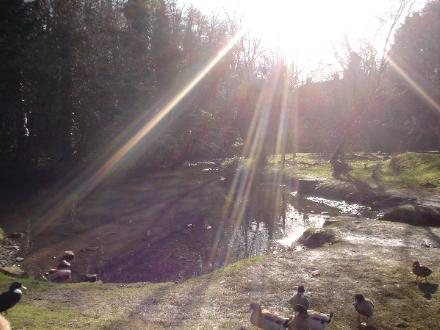
Search
Instagram: @andcusack
Click here for my Instagram photos.Most Recent Posts
- Burns Tower April 19, 2024
- Patrick in Parliament March 18, 2024
- Articles of Note: 13 March 2024 March 13, 2024
- Cambridge March 9, 2024
- Taken on Trust March 4, 2024
Most Recent Comments
Book Wishlist
Monthly Archives
Categories



The Asquith family and Horner family are the same. Katherine Horner married Raymond Asquith who was killed in WWI and it is their son who now lives at the manor house at Mells. I understand that it’s fun to post your thoughts and news, but if you are presenting facts it’s probably worth getting them right.
You make no mention of Mells Park on the outskirts of Mells which is a country house designed by Lutyens for the Chairman of the Midland Bank.
Also the small street that runs up to the gates of the church is a rare example of a planned mediaeval street similar to that of the Vicars’ Close in Wells.
Can you inform me, please? Is the burial ground for Knox attached to the church in some “canonical” way? What I mean is that the church is doubtless Anglican, being the village church. Wouldn’t Knox have wished to be buried in — or were there even in existence — separate burial grounds for Roman Catholics in England?
Apart from that, did he not wish to be buried with his rather eminent family? I have read Penelope Fitzgerald’s memoir, The Knox Brothers, which is fascinating. I am unaware, however, of the way in which burial grounds are administered in England. Thank you.
The Church in Mells pre-dates the Reformation, so its burial ground was consecrated according to proper Catholic rites. While it has since been taken over by the Anglicans, this is no way negates the original proper consecration for the burial of the dead.
Up until recently I was told that my family history was of Prussian/German decent. Recently I found ties that might negate that reasoning and possibly bring forth a link to English heritage. This is an exciting time for me. If anyone has any factual insight, I would appreciate any bit of information thrown my way.
It is worth adding that since 1979 there is an annual Mells Daffodil Festival (as I understand it usually takes place on Easter Monday? – I have just returned from this year’s one!).
Anyway, thank you for this beautifully written piece on Mells (and the enclosed photographs). I hope you also enjoyed Downside Abbey. :)
I believe that the house in Mells Park by Lutyens was for the Horner family, but after a disastrous fire the Horners went back to the old manor. Perhaps it was rebuilt for the Midland Bank man.
I was born at Great Elm.The Midland Bank man was Reginald Mckenna Home Secretary and Chancellor of the Exchequer under Asquith
What an interesting graveyard Mells has.Next to the grave of Siegfried Sassoon,as seen in photo number 8,is the grave of young Mark Horner,16,who died of scarlet fever in 1908.Only 5 years earlier,he was a witness at the inquest of a boy named Rupert Paget,who died after being struk by a cricket ball during a school game at Summerfields prep school,Oxford.How sad,that both these young lads never got the chance to live like to its fullest.R.I.P.
A splendid account. We visited Mells last week, in identical weather.
Another notable convert buried at Mells is Christopher Hollis, author, MP, and father of Bishop Crispian Hollis. Msgr Knox’s original tombstone was horizontal and over the years the lettering was worn away by the rain. I saw it back in 1983 and when I had occasion to return to Mells many years later I could not locate his grave at first because the new tombstone is vertical. Another interesting feature: “Arbuthnott” should have two “t’s” at the end. This mistake had been made twice before: on the Newcastle Medal he received at Eton, and on his ordination card as an Anglican.